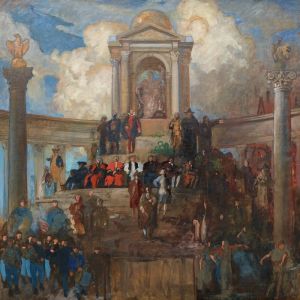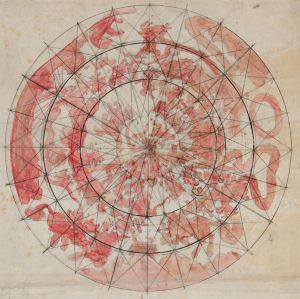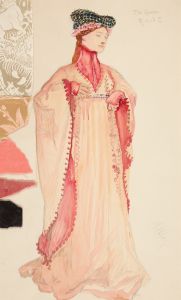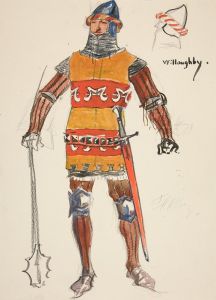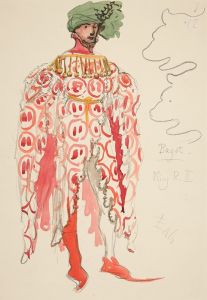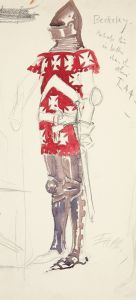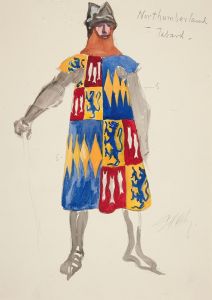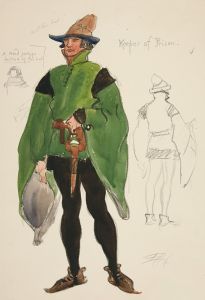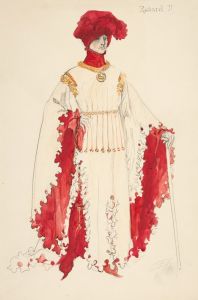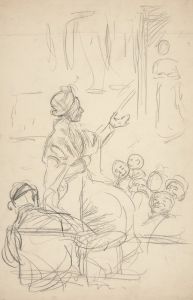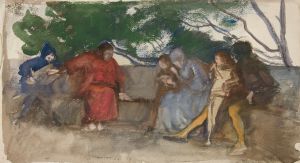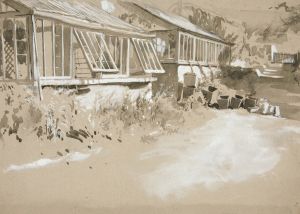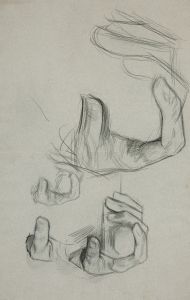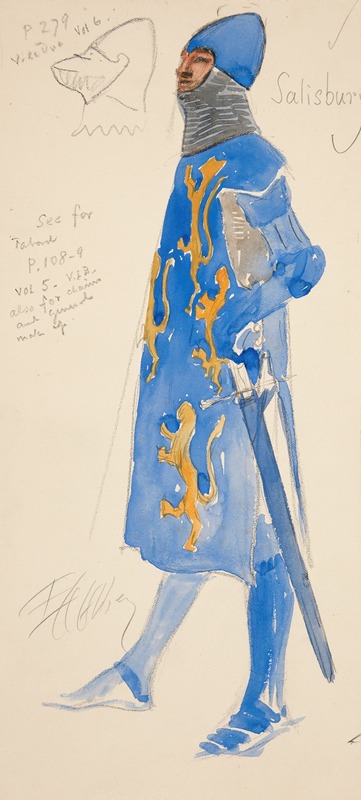
Salisbury , costume sketch for Henry Irving’s 1898 Planned Production of Richard II
A hand-painted replica of Edwin Austin Abbey’s masterpiece Salisbury , costume sketch for Henry Irving’s 1898 Planned Production of Richard II, meticulously crafted by professional artists to capture the true essence of the original. Each piece is created with museum-quality canvas and rare mineral pigments, carefully painted by experienced artists with delicate brushstrokes and rich, layered colors to perfectly recreate the texture of the original artwork. Unlike machine-printed reproductions, this hand-painted version brings the painting to life, infused with the artist’s emotions and skill in every stroke. Whether for personal collection or home decoration, it instantly elevates the artistic atmosphere of any space.
Edwin Austin Abbey's costume sketch for "Salisbury" was created as part of the preparatory work for Henry Irving's planned 1898 production of William Shakespeare's play "Richard II." Abbey, an American artist known for his illustrations and paintings, was commissioned to design the costumes for this theatrical production. Although the production itself was never realized, Abbey's sketches remain significant as they reflect the artistic and historical considerations of the late 19th century.
Edwin Austin Abbey was born in 1852 in Philadelphia, Pennsylvania. He gained recognition for his illustrations in magazines such as Harper's Weekly and Scribner's Magazine. Abbey moved to England in 1878, where he became deeply involved in the art and theater scene. His work often focused on historical and literary themes, making him a fitting choice for designing costumes for a Shakespearean play.
Henry Irving, a prominent English actor-manager of the time, was renowned for his innovative and ambitious productions of Shakespeare's works. His planned production of "Richard II" was to be a grand affair, and he enlisted Abbey to create detailed costume designs that would bring authenticity and visual splendor to the stage. Abbey's sketches were intended to capture the essence of the characters and the historical period of the play, which is set during the late 14th century.
The costume sketch for "Salisbury" depicts the character of John of Gaunt, Duke of Lancaster, who is a significant figure in "Richard II." Abbey's design reflects the opulence and regality associated with the English nobility of the time. The sketch likely includes intricate details of the fabrics, patterns, and accessories that would have been used to create a historically accurate and visually striking costume.
Abbey's approach to costume design was meticulous, as he conducted extensive research to ensure historical accuracy. He studied portraits, tapestries, and other historical artifacts to inform his designs. This dedication to authenticity was in line with the broader trends in theater during the late 19th century, which saw a growing emphasis on realism and historical fidelity in stage productions.
Although Henry Irving's production of "Richard II" was ultimately never staged, Abbey's costume sketches, including the one for "Salisbury," have been preserved and are appreciated for their artistic merit and historical value. They offer insight into the collaborative process between artists and theater practitioners during this period and highlight the importance of visual design in bringing Shakespeare's works to life on stage.
Today, Abbey's sketches are part of various collections and are studied by art historians and theater enthusiasts alike. They serve as a testament to Abbey's skill as an artist and his contribution to the theatrical arts, as well as a glimpse into the rich cultural landscape of the late 19th century.





